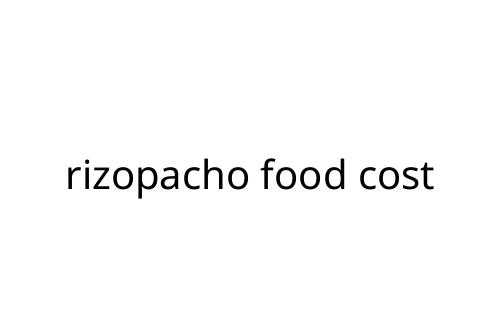rizopacho food cost
Understanding rizopacho food cost isn’t just about crunching numbers. It’s about finding real value and understanding where your money goes in every meal. For anyone trying to budget smarter or considering what rizopacho brings to the table, food cost is a smart place to start.
What Is Rizopacho?
Rizopacho is a fusion dish, combining Asian rice preparations with Mexican-inspired flavors. It’s gaining popularity in urban food circles and often appears in trendy eateries or as a niche homemade recipe. The ingredients usually include rice, vegetables, spices, sometimes protein (like chicken, tofu, or beef), and signature sauces.
Ingredients and Their Impact on Cost
The core ingredients—rice and vegetables—are generally affordable. Rice is inexpensive, especially if bought in bulk. The choice of vegetables can raise costs if you opt for out-of-season items or specialty produce. Proteins—especially beef or premium cuts—will bump up the bill. If you stick to plant-based options, your overall rizopacho food cost stays low.
Sauces and spices matter as well. Homemade, simple sauces help control costs, while store-bought or imported flavors can get pricey.
Home Cooking vs. Eating Out
Cooking rizopacho at home is the most cost-effective route. If you purchase basic ingredients, you can prepare a balanced meal for under a few dollars per serving depending on your protein choice. Bulk-buying rice, seasonal veggies, and store-brand spices keep things affordable.
At a restaurant, rizopacho food cost can jump significantly. Pricing often reflects ambiance, location, and labor—not just the components on your plate. Expect to pay a premium in urban eateries with creative presentations or organic ingredients. Still, some local cafes or takeout spots might offer rizopacho at a reasonable price—especially if it’s part of a lunch special.
Factors That Influence Rizopacho Food Cost
- Ingredient Quality: Premium rice, organic produce, and free-range proteins add up.
- Portion Size: Bigger servings mean a higher total cost but might be better value per ounce.
- Preparation Method: Complex, multi-step recipes require time and fuel, slightly increasing home cooking costs.
- Where You Live: Prices for rice, produce, and protein vary by region and season.
Pros and Cons of Making Rizopacho
Pros:
- Affordable, especially with vegetarian recipes or bulk ingredients.
- Flexible—easy to adapt to sales, pantry leftovers, or dietary needs.
- Can scale recipes up or down for meal prep or group dining.
Cons:
- Cost can rise if you choose specialty add-ins or expensive proteins.
- Prep time increases with complexity or premium ingredients.
- Dining out often costs much more than making it yourself.
Bottom Line
Rizopacho food cost is mostly what you make of it. Home cooks can keep things affordable by using staple ingredients and in-season produce. At restaurants, expect a mark-up but look for specials or casual spots for better value. Whether you’re after creative rice dishes at home or sampling the trend in town, understanding the breakdown of rizopacho’s food cost helps you get the most satisfaction for every dollar spent.




